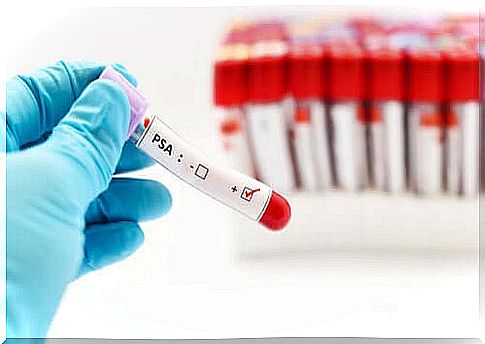What Are Prostate Tests?

Prostate examinations are often the subject of taboo among men. For many, it means an invasion of privacy that they are unwilling to give up. Over time, fortunately, these studies have become increasingly widely accepted methods.
The prostate gland, as the name implies, is a gland found only in men. It is located just below the bladder and wraps around the urethra. The function of the prostate is to produce fluids that later form semen.
Over the years, the size of the prostate begins to gradually increase. This is a phenomenon that occurs in all men with age. Today, for example, we know that at the age of 80, almost 70% of men have seen abnormal growth of that gland.
Prostate cancer is the most aggressive and deadly form that overgrowth of this gland can lead to over time. It is one of the most common cancers in men, the most common cancer in men in Finland and a major culprit in diseases that have resulted in the death of the male population.
Just as in women, a gynecological loose cell sample, or pap test, and breast cancer mammography are preventive tools among women in the fight against common cancers, the same is true for prostate examinations among men. In other words, prostate tests are a tool that screens and prevents cancer in men.
Prostate examinations initially involve two different practices: measuring prostate antigen and rectal palpation. If one or both of the measurements produce abnormal results, the doctor will perform a second stage of diagnosis, in which the patient will have an ultrasound examination of the prostate and a biopsy, or biopsy.
Before we delve into the details and course of prostate examinations in more detail, let’s open up a little more about who should focus on those examinations.
For whom are prostate tests recommended?
It is important to clarify at this stage that prostate examinations do not apply to all age groups of men. Indeed, medicine has helped to strengthen those age groups and protocols to determine who benefits from screening and who does not.
The main parameters are related to the patient’s age:
- Men over the age of 50 : Men over the age of 50 should be referred for prostate examinations annually or at least every two years.
- Men aged 45 to 50: This age group should be tested if they are found to have risk factors for prostate cancer. For example, it has been confirmed that, in particular, dark-skinned offspring as well as men with a family history of prostate cancer should be directed to prostate examinations to confirm (or rule out) the possibility of cancer.
- Men under 40 years of age : In men under 40 years of age, the risks of prostate cancer are very rare, so regular tests are usually not needed. However, in those cases where there is a lot of prostate cancer in a man’s family, the possibility of cancer and prostate growth can be monitored as early as this age.
When determining the need for a prostate test, the doctor first prescribes a measurement of prostate antigens and a rectal examination. The measurement is performed by laboratory techniques through a blood sample and rectal palpation during the same medical visit.
If the laboratory results are normal, the patient is advised to return to the examinations after one year. However, in some cases, measurement of prostate antigens may be ordered every two years if no risk factors for prostate cancer have been identified in the patient.

Prostate tests: prostate-specific antigen or prostate test (PSA)
Prostate-specific antigen, or PSA analysis, is part of prostate studies. It is a blood test that allows a doctor to measure a substance produced by the prostate in a patient’s blood. If cancer occurs, the antigen in question is elevated and its detection tells the doctor about the ongoing pathological process.
In any case, the PSA value may also rise for reasons other than cancer. The PSA value may be elevated, for example, in the following cases:
- The patient has undergone a transrectal ultrasound examination of the prostate.
- Prostate Inflammation: Prostate-related infections increase blood PSA levels.
- Prostate hyperplasia: This enlargement, called benign prostate, also changes the PSA value in the blood; however, in the case of prostate hyperplasia, PSA values are not as high as in the case of prostate cancer.
Normal blood PSA reference values are less than 4 ng / ml in men. If the results show that the sample values are between 4 and 10 ng / ml, it may be prostate cancer. With PSA values above 10, the chance of cancer is very high.
Prostate examinations: rectal palpation
Rectal palpation or rectal palpation is another part of prostate examinations. In the test, the doctor inserts a finger through the patient’s anus into the rectum and presses it through it to feel the gland.
The procedure is performed with gloves and a lubricant to reduce any discomfort. It is recommended that the patient sit sideways on the examination table in the fetal position to the best of their ability, as in this position examinations through the rectum are the least uncomfortable and painful.
Using this examination, a researcher, doctor, or nurse will look for direct palpation of the prostate located near the rectum. With this examination, the prostate is palpated quickly, accurately, and effectively, as the physician is able to detect any protrusions or indurations that may be due to an abnormal process of prostate growth.
If the tests show abnormalities in the prostate, your doctor will suggest further tests. Further testing is even more important in situations where abnormal findings from rectal palpation are associated with a high PSA result in blood tests.

What to do if prostate tests turn out to be abnormal?
If abnormal changes are found in the prostate tests, the next step to the prostate tests is a doctor’s referral to imaging tests to help clarify the diagnosis. For example, the doctor may request an ultrasound examination and, if necessary, a biopsy, ie a biopsy.
Timely detection of prostate abnormalities and abnormal changes is essential for the patient’s own health. A tumor detected in time is completely treatable and manageable. In Finland, the prognosis for prostate cancer is very good, as more than 90 percent of men with cancer are still alive after five years.
Despite a good prognosis, this is a serious disease, as prostate cancer is the most common cancer in Finnish men. This is why health professionals place great emphasis on conducting prostate tests, as this is a very effective way to avoid the fatal consequences of this cancer.
It is therefore essential that men cross the threshold that prevents them from going to these tests and follow the doctor’s instructions to repeat the tests. An annual visit to the doctor’s office can bring several happy extra years to life without fear of prostate cancer.









